Many people often confuse donkeys with mules and vice versa. Some even believe that the two animals are practically the same. The truth is, while they are similar and are related genetically, they are not the same by any means.
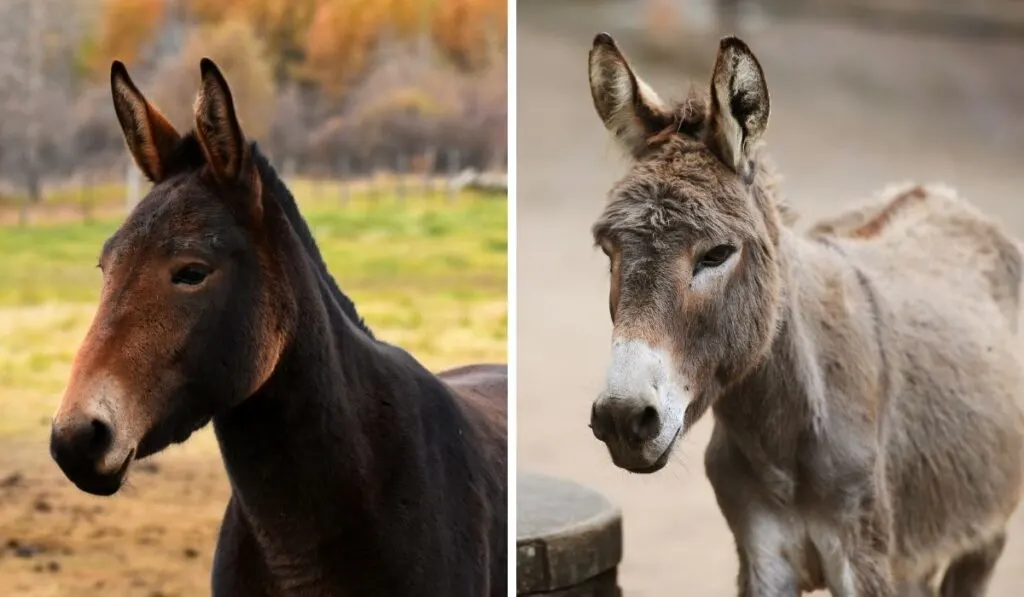
Many distinct differences exist between donkeys and mules. While visually the two animals can be easily confused with one another, it is important to know their differences to be able to easily distinguish them from one another.
Table of Contents
Taxonomy and Genetics
Donkeys are a member of the Equidae family and the genus equus, the same as horses. The donkeys that we know today are members of the domesticated subspecies equus africanus asinus. (source)
Genetically speaking, donkeys have only 62 chromosomes, unlike the 64 that horses have.
(source)
Mules are the biological production of a male donkey mating with a female horse. They are considered a hybrid species. Mules are genetically related to donkeys and horses, but they only have 63 chromosomes. (source)
Physical Appearance
Since DNA testing is not always an option, often, you can spot the difference between a donkey and mule based on their physical appearance. Here are some of the easiest differences to see.
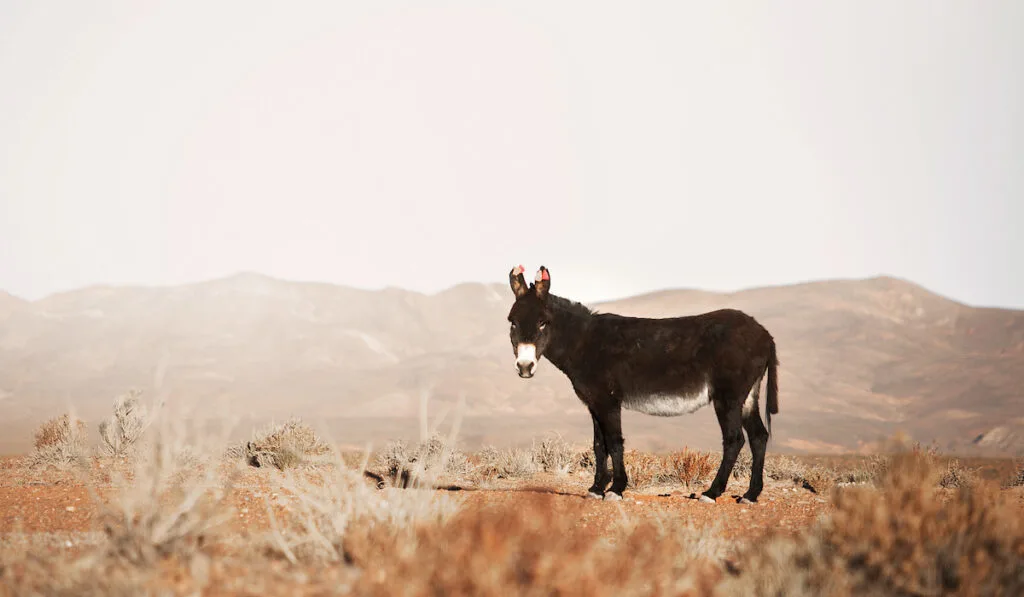
Weight and Height
Donkeys can weigh between 180 and 1,060 pounds, a large variance that depends on the type and breed.
Standard-sized domesticated donkeys usually weigh around 400 to 500 pounds and stand around 48 inches tall, on average.
Miniature donkeys will be smaller while mammoth-sized donkeys can stand up to 56 inches and weigh astonishing 950 pounds! (source)
Mules can vary in size and appearance due to their genetic makeup. A mule’s size depends on their parents.
Mules often weigh somewhere between 500 and 1,000 pounds but can stand as tall as the horse that helped create them. Mules typically stand much taller than the average donkey.
Head and Ears
Donkeys have proportional-sized heads with broad shaped foreheads. Their ears are usually slightly longer than those of mules and significantly longer than a horse’s ears.
Mules often have wide heads like that of donkey but not as prominent. They are usually most easily recognizable by their ears, which are noticeably longer than that of a horse but shorter than those of a donkey.
Color
Donkeys are typically a shade gray, brown, black, white. Some can be spotted; some may also have a distinctive dark stripe down their backs and most of them have white or lighter colored hair around their eyes and mouths.
A mule’s color can vary more drastically depending on the specific breeding and color of the horse that helped produce them. Mules can be found in almost any color of the equine spectrum.
Tail
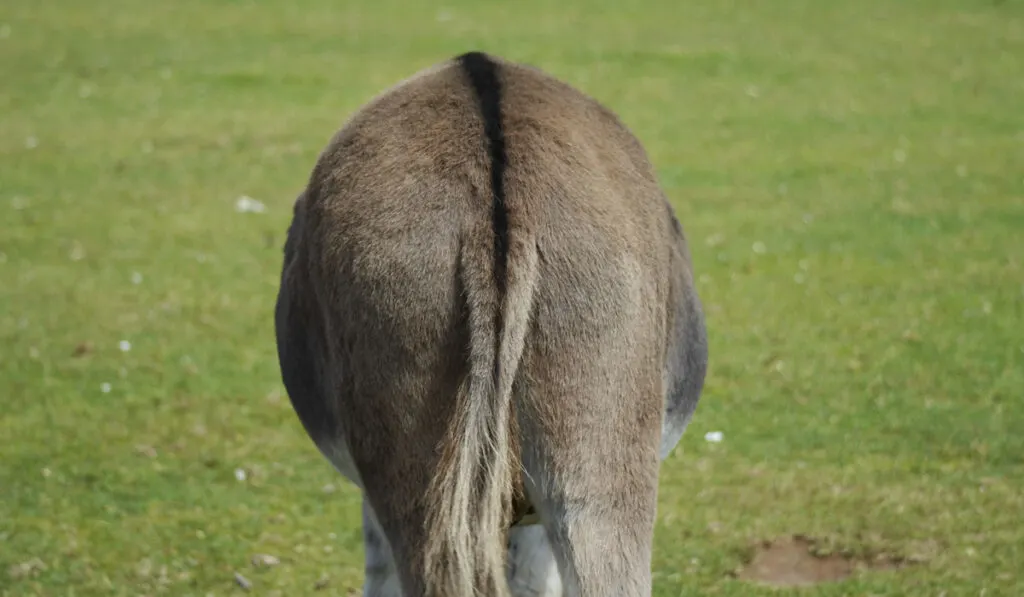
A donkey’s tail is noticeably different than that of a mule. The tail of a donkey is more cow-like, with a tuft of hair sprouting at the end of the tail.
A mule’s tail looks completely different and can be a tell-tale sign to distinguish a mule from a donkey. The tail of a mule is like that of a horse, with hair flowing out at the base, all the way to the end.
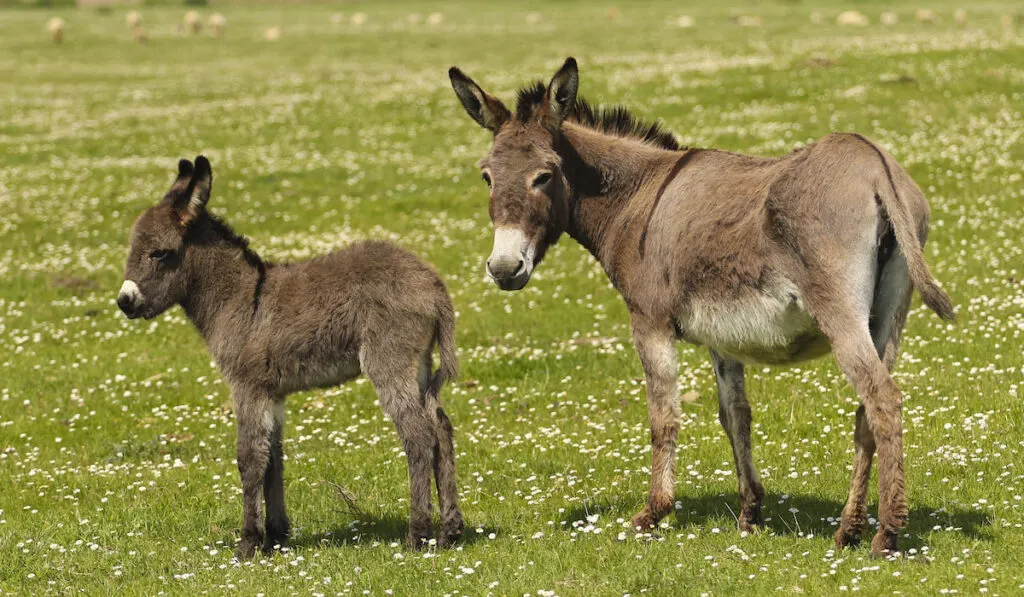
Back
A donkey’s back is noticeably straight, with no curve to it like that of a horse.
Mules have a slight curvature to it, not as prominent as a horse’s but not completely straight like that of a donkey.
Temperament
Donkeys are well-known as being hardheaded and protective, of themselves. Donkeys can be easy to handle if you have patience, but they will refuse any activity they perceive as dangerous, much more so than a mule will.
Mules tend to have better temperaments and are often much easier to deal with than donkeys. Their horse lineage helps them to be calmer and less suspicious of people or unfamiliar things.
Trainability
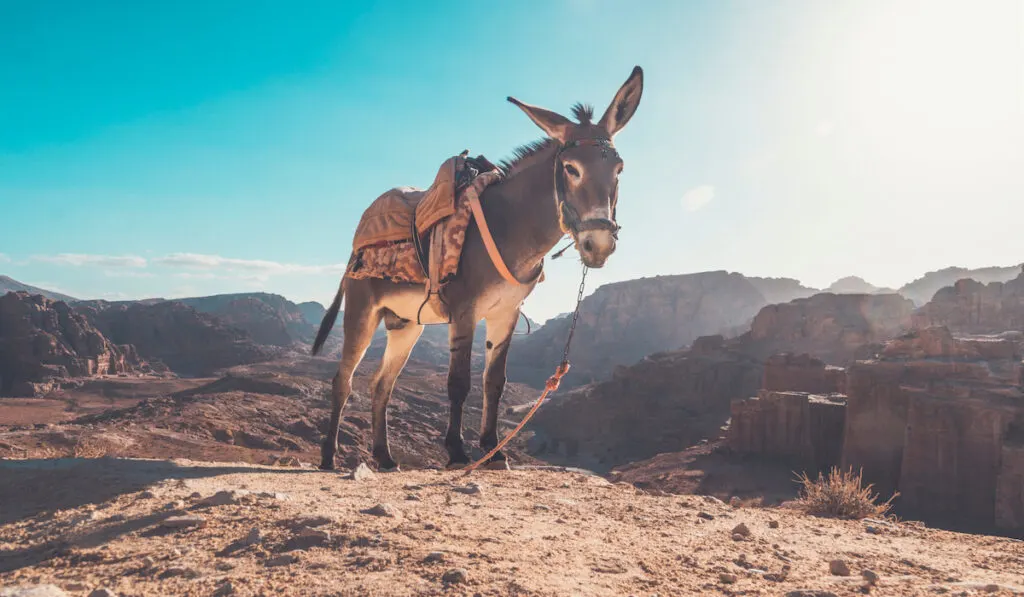
Donkeys are intelligent creatures that can easily be trained but it often takes a patient and knowledgeable trainer to make it happen. Desensitization to fearful situations and positive reinforcement are ideal methods for training donkeys.
Mules are unique in the fact that they thought to be smarter, stronger, and more reasonable than either of their parents. Mules are said to be easier to train than donkeys or horses.
Lifespan
The lifespan of a donkey depends on where and how they live. Domesticated donkeys can live anywhere from 30 to a shocking 50 years! (source)
Mules have a slightly shorter lifespan than donkeys, although they can often live longer than the average horse. Mules can live a long time, between 30 to 40 years old!
Nutritional Requirements
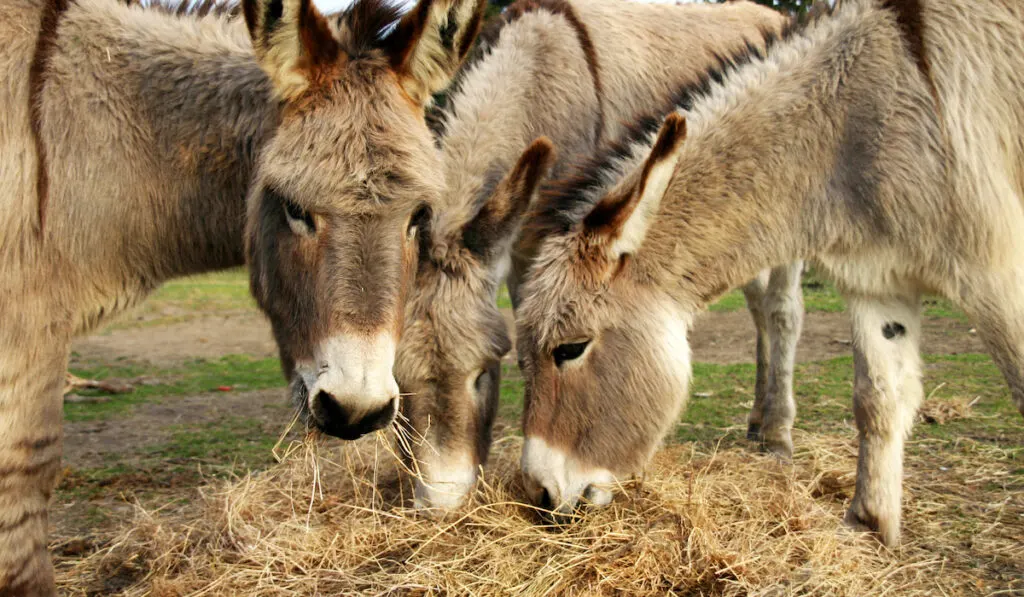
Donkeys need around 5-10% of protein in their daily diets. Their daily food intake should include mostly straw along with grass or hay. Donkeys can survive on low-quality fibrous forage because they process foods more efficiently.
Mules are like donkeys in the nutritional area, but they do not process food quite as efficiently. They may need more high-quality forage, but it depends on the specific mule.
Fertility
Donkeys are fertile animals. Mules, on the other hand, are almost always sterile, meaning they are not fertile. Mules contain an odd number of chromosomes, making them unable to reproduce. It is extremely rare, but it is possible to find a female mule that is fertile. So far, there is no proof of a male mule ever existing that was fertile.
Sounds
Donkeys make a distinctive sound known as braying, but most of us called it hee-hawing! Their “holler” has a noticeable high pitch sound followed by a much lower pitched sound. It can be harsh on the ears, but it is a great defense mechanism for donkeys.
Mules are unique in the noise department because they will sound like both a horse and a donkey. They can whinny like a horse, but their call will often end with a donkey-like hee-haw. (source)
How Can You Tell if an Animal is a Mule or a Donkey?
| Characteristic | Donkey | Mule |
| Head Size | Wide, broad forehead | Less broad forehead, more horse-like |
| Ear Length | Longer than that of both a mule and horse | Shorter than a donkey’s, longer than that of a horse |
| Color | Shades of gray and brown | Any color depending on the parent horse |
| Height | Average of 48 inches | Most often taller than a donkey. |
| Back | Straight back | Slightly curved back. |
| Tail | Cow-like, tufts of hair at the end | Horse-like, full flowing hair from base to end |
What is a Molly Mule?
A molly mule is a female mule that has a normal estrus cycle and is fertile. It is extremely rare, but there have been documented cases.
Some people call all female mules molly or molly mule, but that is technically only accurate if they are fertile. (source)
What is a Jennet?
A jennet, also known as a Spanish jennet, was simply a small horse of Spanish origin. It was not a term that was exclusive to a specific breed.
The word was used to describe a compact, muscular horse that had an ambling gait. Today, the term jennet is often used to describe a female donkey, also called a jenny. (source)
Is There a Difference Between a Donkey and a Burro?
Technically, no. A burro is a small, compact-sized donkey and is often considered a breed on its own in certain countries.
The term burro simply means donkey in the Spanish language.
They tend to weigh between 110 pounds and 410 pounds. They are gray in color and stand an average of 43 inches. (source)
Final Thoughts
Mules and donkeys are similar, but they have several differences between them. Spotting these differences should be a little easier now. Keep in mind that no matter how much you know, some donkey or mule owners will still not agree with you and that’s okay.
Source:
- http://www.hartshorsemanship.com/index.cfm?fuseaction=controller.viewPageThoughtDetail&thoughtUuid=BE68EBFE-4063-C7B3-5EB13796296E636C

